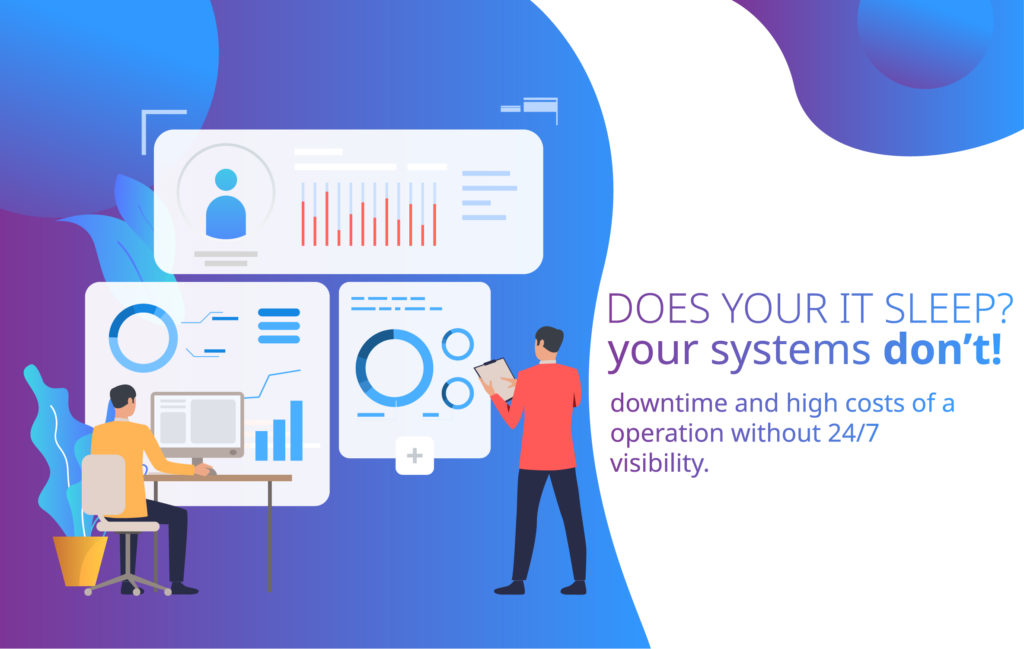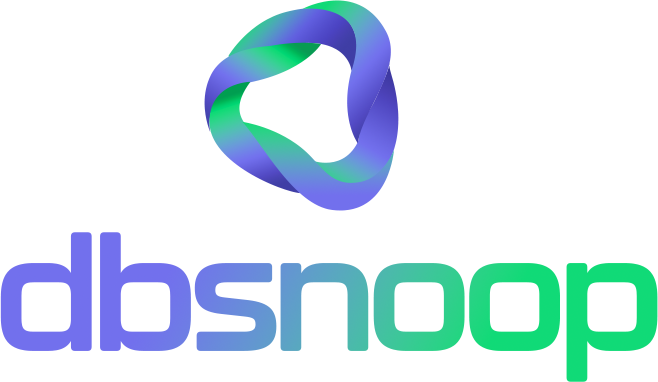

The idea that the criticality of an IT operation diminishes after 6 p.m. is one of the most dangerous illusions in the digital world. Your systems—the e-commerce site receiving late-night orders, the API serving a partner in another time zone, the SaaS running globally—don’t have a time clock. They operate under constant pressure. However, the monitoring model of most companies is still based on a reactive and human principle: when something breaks—downtime—during the night, an alert will wake someone up.
This model is not just outdated; it is a source of continuous loss. The time it takes for an on-call professional to wake up, understand the context of an alert (often a false positive), diagnose the root cause, and finally apply a fix for the downtime, is time in which revenue is lost, the customer experience is degraded, and your brand’s reputation is eroded. The question is not if your IT team sleeps, but why your data protection strategy is also asleep.
The Fundamental Flaw of the Reactive Nighttime Model for Systems Downtime
Relying on alerts to trigger a human response to downtime during the night is an inherently flawed strategy, for reasons that go far beyond response time. The problem is the quality of the monitoring and diagnosis.
Alert Fatigue and the “Boy Who Cried Wolf” Syndrome: Traditional monitoring tools are “noisy.” They trigger alerts for temporary spikes and inconsequential events. Over time, the on-call team becomes desensitized. The critical downtime alert at 3 a.m. is ignored because it looks like the last five false positives, which had no real impact.
Slow and Solitary Diagnosis: An SRE or DBA awakened in the middle of the night rarely has the luxury of collaborating with other teams. They are alone, trying to piece together a complex puzzle under pressure, without the support of developers or infrastructure specialists. The diagnostic process is manual, slow, and prone to errors, drastically increasing the Mean Time to Resolution (MTTR).
The Cost of Burnout and Knowledge Loss: Exposing your most valuable technical team to a constant cycle of nighttime stress is a recipe for burnout. Talent turnover, loss of institutional knowledge, and a decline in the quality of daytime work are real and massive costs, though rarely quantified. Losing an expert who knows the nuances of your system is a loss that can take months to recover from.

The Paradigm Shift: From Reactive to Proactive with the Autonomous DBA
The solution is not to hire more people to watch dashboards during the night. The solution is to shift the paradigm from reactive to proactive, from human-dependent to intelligence-assisted. This is where the Autonomous DBA concept from dbsnOOp comes into play, offering a layer of intelligence that works while your team rests.
The Autonomous DBA is not simple automation. It is a platform that uses Artificial Intelligence to emulate and scale the diagnostic and analytical capabilities of a senior DBA, operating tirelessly, 24/7.
How the Autonomous DBA Ensures Continuous and Intelligent Monitoring – Zero Downtime
While a human team reacts to predefined thresholds (CPU > 90%), dbsnOOp’s AI takes a much more sophisticated approach, directly based on its core functionalities:
Baseline-Driven Predictive Analysis: The platform first learns what “normal” behavior is for your environment at different times, including the early hours when backup and ETL routines are executed. Using machine learning, it builds a dynamic, multi-dimensional baseline. Monitoring focuses on anomalous deviations from this normality, detecting the first signs of a problem hours before it breaches a static threshold and becomes critical.
Instant Top-Down Diagnosis: When an anomaly is detected—for example, an increase in disk latency (iowait)—the platform doesn’t just trigger a superficial alarm. It instantly performs a root cause analysis. As detailed in its features, it uses a Top-Down approach:
- Identifies the latency at the operating system level.
- Correlates it with the database session that is suffering.
- Pinpoints the exact query, user, and application responsible.
- Analyzes the query’s execution plan to find the inefficiency.
The diagnosis that would take a human 40 minutes of manual investigation, the AI does in seconds.
AI-Powered Tuning for Active Prevention: The Autonomous DBA doesn’t stop at diagnosis. It acts as a performance consultant. Upon identifying a problematic query, dbsnOOp’s AI suggests the most effective solution, such as creating a missing index, rewriting a JOIN, or adjusting a configuration. This means a problem identified at 2 a.m. can have a correction plan ready and waiting for the team at 9 a.m., instead of a fire to be extinguished.
The Powerful Synergy: Transforming IT Management from Reactive to Predictive
The goal of a 24/7 observability platform is not just to respond to incidents faster; it is to create an ecosystem where critical incidents become the exception, not the rule. dbsnOOp was designed on this principle of proactivity, creating a unique synergy between its AI and your technical team.
AI as an Autonomous Performance Analyst: The Autonomous DBA works tirelessly, 24/7, not as an alarm system, but as a senior data analyst. During periods of lower load, such as early mornings and weekends, it performs the work that human teams rarely have time for: analyzing degradation trends, identifying inefficiency patterns, and correlating low-level events that are precursors to future failures and downtime.
Empowering Your Team with an Intelligent “Action Plan”: The result of this nighttime work is not an inbox full of red alerts. It is a prioritized optimization dossier, ready for the team at the start of the business day. Instead of starting the day fighting fires and dealing with the aftermath of prolonged downtime, your team of SREs and DBAs finds a clear action plan:
- Optimization Opportunity: “Query ID #5678, from application ‘X’, has had its I/O cost increase by 40% over the last two weeks and now poses a performance risk during peak loads.”
- Root Cause Diagnosis: “Analysis of the execution plan reveals that the growth of table ‘Y’ has made the current index ineffective.”
- Recommended Action Plan: “Creating this new composite index should reduce logical reads by 98% and prevent future bottlenecks.”
This approach fundamentally changes the nature of your IT team’s work. They cease to be incident responders and become architects of resilience. The platform transforms the reactive chaos of downtime after downtime into a virtuous cycle of continuous improvement, allowing your experts to use their time and talent to strengthen and innovate, rather than just fixing what broke.
Your systems don’t sleep. The vigilance over them shouldn’t either.
Want to solve this challenge intelligently? Schedule a meeting with our specialist or watch a live demo, and learn how to stop having nightmares about downtime!
Schedule a demo here.
Learn more about dbsnOOp!
Learn about database monitoring with advanced tools here.
Visit our YouTube channel to learn about the platform and watch tutorials.

Recommended Reading
- What is query degradation and why does it happen?: Many of the critical problems that occur in the early hours are the result of slow and silent degradation. This article explains why a query that was fast last week could become the cause of this Saturday’s downtime, reinforcing the need for proactive monitoring that detects these trends before they stop the system.
- When are indexes a problem?: The solution to a nighttime problem is not always the most obvious. While a missing index can be the cause, a bad index can also be the villain. This post delves into one of the most common causes of performance problems, essential knowledge that dbsnOOp’s AI uses to provide accurate tuning recommendations, 24/7.
- 24/7 monitoring of databases, applications, and servers: This article expands the discussion on the need for a unified view. The cause of a nighttime slowdown may not be in the database, but in the application or the server. It reinforces the value of dbsnOOp’s Top-Down approach, which correlates all layers to find the root cause quickly, even when your team is offline.

